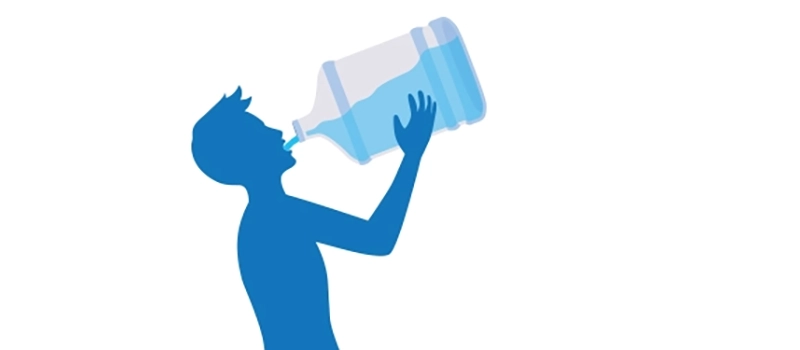
Everyone gets thirsty sometimes, but if you start to feel you’re thirsty nearly all the time that can be one of the early signs that you have Type 2 diabetes. It is a manageable condition, but it does require you to make changes to your diet and lifestyle and you may need insulin to manage your blood sugar. The fact diabetes is so common means that big advances have been made with treatment of it, including inhalable insulin for those who don’t want to inject themselves. It’s best to know all the signs and symptoms of Type 2 diabetes, and Glucophage is an effective Type 2 diabetes treatment medication.
It is usually only people in the US Midwest that will refer to the bathroom as the biffy, but whatever you call it everyone also needs to spend some time there each day. If you find that you need to go there for number 1s much more often than before then that can also be an indicator that your blood sugar levels have been up for a long period of time now even though you weren’t aware of it. Gaining or losing weight and foot tingling or numbness are also signs and symptoms of Type 2 diabetes and some people may be in a prediabetic stage where they haven’t fully developed diabetes but early signs are seen.
There’s also a trend these days where there is more Type 2 diabetes seen in younger people. This is much different than it was for previous generations, where people usually didn’t develop diabetes until they were in their 40s at the very earliest. Chronic illnesses of all types are up in youths all around the world and this is something that has to be of great concern for society, but what we’re going to do here today is explain more about the signs and symptoms of Type 2 diabetes.
Young people are blessed with the vigor of youth, and that tends to mean ample energy. As you get into that age range where people commonly become Type 2 diabetic it’s also pretty standard to lose a lot of the jump you had when you were younger, and that’s something you will really notice if you play any type of recreational team sport. Which you should if you can, it’s rewarding and the exercise will help with diabetes management. But the point here is that if you find you don’t have the same pep in your step like you used to that can also be in signs and symptoms of Type 2 diabetes.
The problem here for people is that they will often just attribute their overtiredness to being overwhelmed by life responsibilities. There is also the connection that being overweight means you are even less likely to attempt vigorous exercise in the first place, and then the excess weight means your blood glucose levels are elevated. Part of what has you in this situation, although genetics can play a role in developing Type 2 diabetes too. It has nothing to do with signs and symptoms of Type 2 diabetes, but African, Arab, Asian, Hispanic, and South Asian people are more likely to develop it.
Increased insulin production is what’s needed and medications like Glucophage work in line with that because they stabilize levels and make it so that more insulin is available for the body to convert glucose. With correct and continued usage most people will find that their signs and symptoms of Type 2 diabetes are much less pronounced. Unchecked diabetes complications can be quite serious, so if you have signs and symptoms of Type 2 diabetes it is best to get a correct diagnosis from a doctor and then start on a diabetes treatment regimen.
Most people don’t pay much attention to their skin when they’re young, but they do as they get older as there are skin changes when that youthful vitality is starting to wear off in a hurry. If you see dark patches developing in places where there are folds and creases in the skin – armpit, groin, and back of neck most commonly – this can be another one of the signs and symptoms of Type 2 diabetes. These are called Acanthosis Nigricans and some people mistake them as a potentially more serious disease like skin cancer.
Having developed obstructive sleep apnea, high cholesterol (triglyceride) levels, or long-term severe depression can make it more likely that you end up with signs of type 2 diabetes symptoms, and as a safe guideline it is recommended that people over 40 get tested to diabetes once every three years.